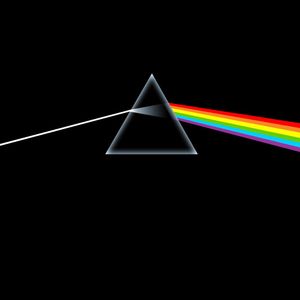 I spent a week listening to Pink Floyd’s 1973 album “Dark Side of the Moon” for what I can learn to improve my craft as a songwriting musician. I do this each week with a different album with some recognition as one of the greats. My father enjoyed Pink Floyd so I grew up hearing this album quite a bit. I know all these songs very well. So there wasn’t a lot of discovery happening; this week reminded me what I love about the album.
I spent a week listening to Pink Floyd’s 1973 album “Dark Side of the Moon” for what I can learn to improve my craft as a songwriting musician. I do this each week with a different album with some recognition as one of the greats. My father enjoyed Pink Floyd so I grew up hearing this album quite a bit. I know all these songs very well. So there wasn’t a lot of discovery happening; this week reminded me what I love about the album.
Experts on such things recommend that songwriters have interesting vocals start during the first 20 seconds. The thinking went that somebody reviewing demos would hit eject if it didn’t get their attention in that time. In today’s world of internet streaming, recommendations include having an attention-getting hook within 7 seconds.
In sharp contrast to that advice, this album opens with 36 seconds of nothing but a faded-in heartbeat. Indeed, the first 7 seconds only provide near silence. Then a variety of sound effects rise into a maddening crescendo, broken by a slow groove with bass, flanged guitar, echoey slide guitar, and electric piano. Sometimes the electric piano and slide guitar meld into each other, losing their identity. It’s eerily dreamy.
I like that the songs of the album flow into each, but each is distinct. With “Dark Side of the Moon,” Pink Floyd crafted a collection of individual songs conceived as whole. This idea of an album had a huge influence on me. Before Trip Gunn, I designed whole albums. I built a structure of songs supporting an overall concept. My albums incorporated a Floydian style of having one song lead into the next. I decided with Trip Gunn that I would focus on writing good songs rather than always trying to make big albums. Not that one is better than the other, I just felt I needed to change the way I was thinking.
One of my favorite songs “Time” has not one, but two intros. That’s not why I like it, but I find it interesting. The track starts with the end of an explosion (from the previous track) and several clock alarm chimes going off at once. The second intro is a long section of long-held bass notes on guitar, rototom rolls, and electric piano. The rototoms, which were a new instrument at the time, add interest to a section that I would otherwise find too long.
After two and a half minutes pass, the actual songs kicks in with vocals and a funky rock accompaniment. A lot is said about Floyd in terms of space and psychedelic rock, but they had a particularly funky side too. The back-and-forth play between instruments in songs like this is particularly interesting. I love making use of this in some of my own songs and would like to do it more often.
Of course, “Eclipse” as well as the track “Brain Damage” that leads directly into it. The song has a gospel feel, thanks largely to the organ and backing female vocals. But also the repeating I-IV7-I-IV7-I-II-V-V7-I chord progression give it a spiritually uplifting feel. Added to this is that the track builds into intensity until reaching the concluding lines “Everything under the sun is in tune, but the sun is eclipsed by the moon.” And the song is over, fade out heartbeat.